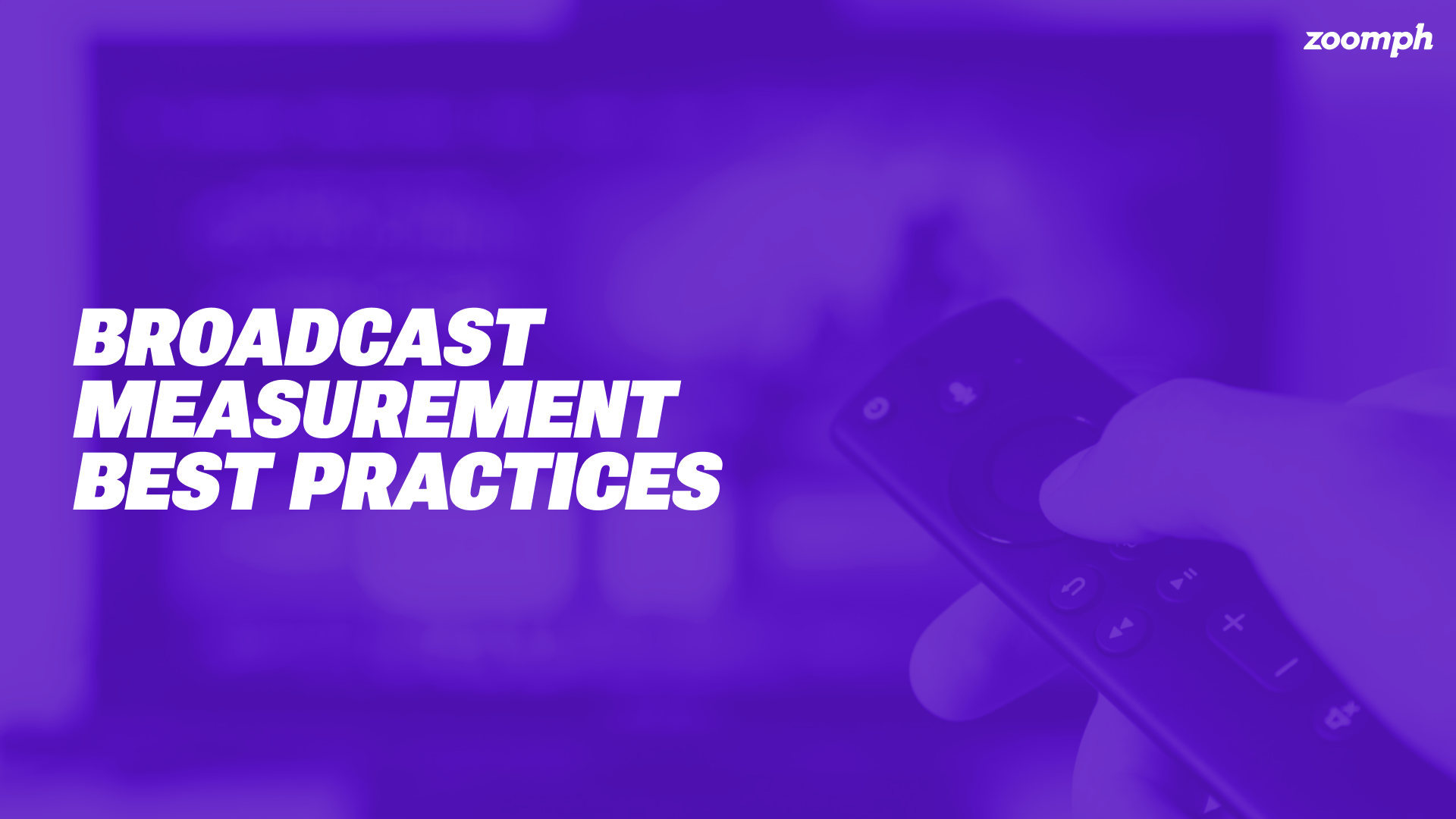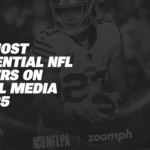
12 Dec Seven Proven Ways to Optimize Broadcast Performance
In the world of sports, entertainment, and live events, broadcast measurement is critical for understanding audience engagement, optimizing sponsorships, and driving revenue. As the industry evolves, brands and event organizers are looking for effective ways to track the performance of their sponsorships and branded content during broadcasts. With Zoomph’s enhanced broadcast platform, they have access to powerful tools that help measure and analyze broadcast performance, sponsor visibility, and asset detection in real-time.
This blog will walk you through best practices for using Zoomph to measure broadcasts, track sponsor effectiveness, and detect branded assets across various platforms.
1. Set Clear Objectives and KPIs
Before diving into Zoomph’s tools, it’s essential to define clear objectives and KPIs (Key Performance Indicators) that will guide your broadcast measurement efforts. These objectives may include:
- Audience Engagement: How actively are viewers interacting with the broadcast? What is the level of real-time interaction (mentions, on-screen actions, etc.)?
- Sponsor Visibility: How often are sponsors featured during the broadcast? Are sponsors driving awareness through on-screen mentions, logos, or product placements?
- Asset Detection: Are specific branded assets (logos, videos, mentions) displayed as planned?
Defining these goals upfront helps ensure that your measurement efforts are aligned with the outcomes you want to achieve. It also enables you to use Zoomph’s features effectively to track these metrics in real-time.
2. Leverage Asset Detection for Real-Time Tracking
Zoomph’s Asset Detection technology is one of the core tools that makes broadcast measurement more effective. This technology uses computer vision and natural language processing (NLP) to identify and track branded content during a live broadcast. From logos and product placements to verbal mentions by commentators, Zoomph’s asset detection allows for comprehensive tracking of sponsor visibility.
Best Practices:
- Track Visual Assets: Zoomph can detect logos, signage, and on-screen graphics, making it ideal for measuring sponsor visibility during broadcasts. Set up custom rules to track specific visual assets based on factors like size, placement, and frequency.
- Monitor Audio Mentions: Zoomph also tracks verbal mentions of sponsors, which can often be as valuable as visual placements. This ensures that sponsors are accounted for even when their logo is not directly visible, but their name or brand is mentioned by commentators or announcers.
- Track Assets Across Multiple Channels: If your broadcast is airing on multiple channels (e.g., TV, digital, etc.), make sure your asset detection is set up to capture brand exposure across all of them. This gives you a comprehensive view of your sponsor’s reach.
3. Use Real-Time Analytics for Dynamic Reporting
One of the standout features of Zoomph is its ability to deliver real-time analytics. This is especially useful during live events where instant feedback is needed to optimize sponsorship strategies and ensure that sponsors are getting the exposure they expect.
Best Practices:
- Monitor Campaign Performance in Real-Time: Track how well sponsored assets are performing as they appear during the broadcast. Zoomph provides live data, which can be crucial for making real-time adjustments to your content strategy, sponsorship placements, or ad spots.
- Track Broadcast Metrics Across Platforms: Zoomph tracks broadcast metrics not only on TV but across other viewing platforms as well. This allows you to gather data on how sponsors are being exposed across different media, offering insights into the full scope of engagement.
- Custom Dashboards for Stakeholders: Zoomph enables you to create custom dashboards that provide key insights tailored to different stakeholders. Sponsors, broadcasters, and event organizers can all have access to dashboards that show metrics relevant to their needs, such as audience reach, sponsor impressions, and engagement.
4. Understand Audience Engagement
Measuring audience engagement is just as important as tracking sponsor visibility. Knowing how your viewers are interacting with the broadcast can help you refine your content and improve sponsor strategies for future broadcasts.
Best Practices:
- Analyze Viewer Demographics: Zoomph provides detailed demographic insights into who is interacting with the broadcast. This data allows you to assess whether your broadcast is reaching your target audience and helps you optimize future sponsorship targeting strategies.
- Measure Engagement Quality: In addition to tracking raw impressions, Zoomph offers metrics like engagement rate (the ratio of interactions to total impressions) and engaged time (how long people are interacting with the content). These metrics help you understand the depth of audience interaction and the effectiveness of sponsor placements.
5. Track Sponsor ROI with Broadcast Visibility
For sponsors, measuring ROI is crucial, and this often revolves around how visible their assets are during a broadcast. Zoomph helps track sponsor impressions, ensuring sponsors get the exposure they paid for, and allows you to measure the effectiveness of these placements.
Best Practices:
- Track Brand Exposure: Zoomph’s asset detection technology helps track sponsor logos, videos, and on-screen graphics in real-time, offering insights into how often and in what contexts sponsors appear during the broadcast.
- Measure Asset Placement Effectiveness: Using heatmaps and visual reports, Zoomph allows you to see which sponsor assets are getting the most visibility and engagement. This can help you optimize placements in real time, or adjust strategies for future broadcasts.
6. Pair Broadcast Metrics with Social Media Insights
While the focus here is on broadcast measurement, it’s important to recognize the synergy between broadcast and social media. Zoomph integrates broadcast data with social media insights to give you a full view of sponsor performance across multiple channels.
Best Practices:
- Track Cross-Platform Engagement: Pairing broadcast and social media insights allows you to see how sponsor visibility on TV translates into online engagement. For example, a sponsor’s logo appearing on screen may lead to increased social media mentions, hashtags, or engagement. Combining both sets of data offers a comprehensive view of audience response.
- Measure the Impact of Hashtags and Mentions: If a broadcast uses specific hashtags or mentions sponsors during the show, Zoomph can track these across social media channels. This helps assess the full impact of sponsored content and provides a deeper understanding of the sponsor’s reach.
7. Customize Reports for Different Stakeholders
Zoomph’s platform provides highly customizable reports, making it easy to share key insights with different stakeholders such as sponsors, event organizers, and broadcasters. Custom reports ensure that each group gets the data they need to assess the effectiveness of the broadcast and its sponsorships.
Best Practices:
- Create Tailored Sponsorship Reports: For sponsors, Zoomph can generate detailed reports on asset detection, sponsor visibility, and engagement. These reports can be used to demonstrate the value of their investment and inform decisions about future sponsorship deals.
- Optimize Broadcast Strategy: For broadcasters, Zoomph provides performance data on how content is being consumed, how sponsors are featured, and what elements are driving the most engagement. Use this data to adjust content and programming strategies to maximize impact.
Conclusion
Measuring broadcast effectiveness, sponsor engagement, and asset visibility is a complex but essential task. With Zoomph’s platform, you gain powerful tools for tracking sponsor assets, monitoring real-time performance, and delivering actionable insights for improving future broadcasts and sponsorships.
By leveraging features like real-time analytics, asset detection, and comprehensive reporting, you can gain a full view of how your broadcast is performing and how sponsors are benefiting from their placements. Integrating broadcast and social media insights allows you to understand the broader impact of your broadcast, ensuring that every sponsorship opportunity is maximized for both visibility and return on investment.
These best practices will help you harness the full potential of Zoomph’s platform to optimize your broadcast measurement strategy and drive greater value for sponsors and stakeholders alike.









